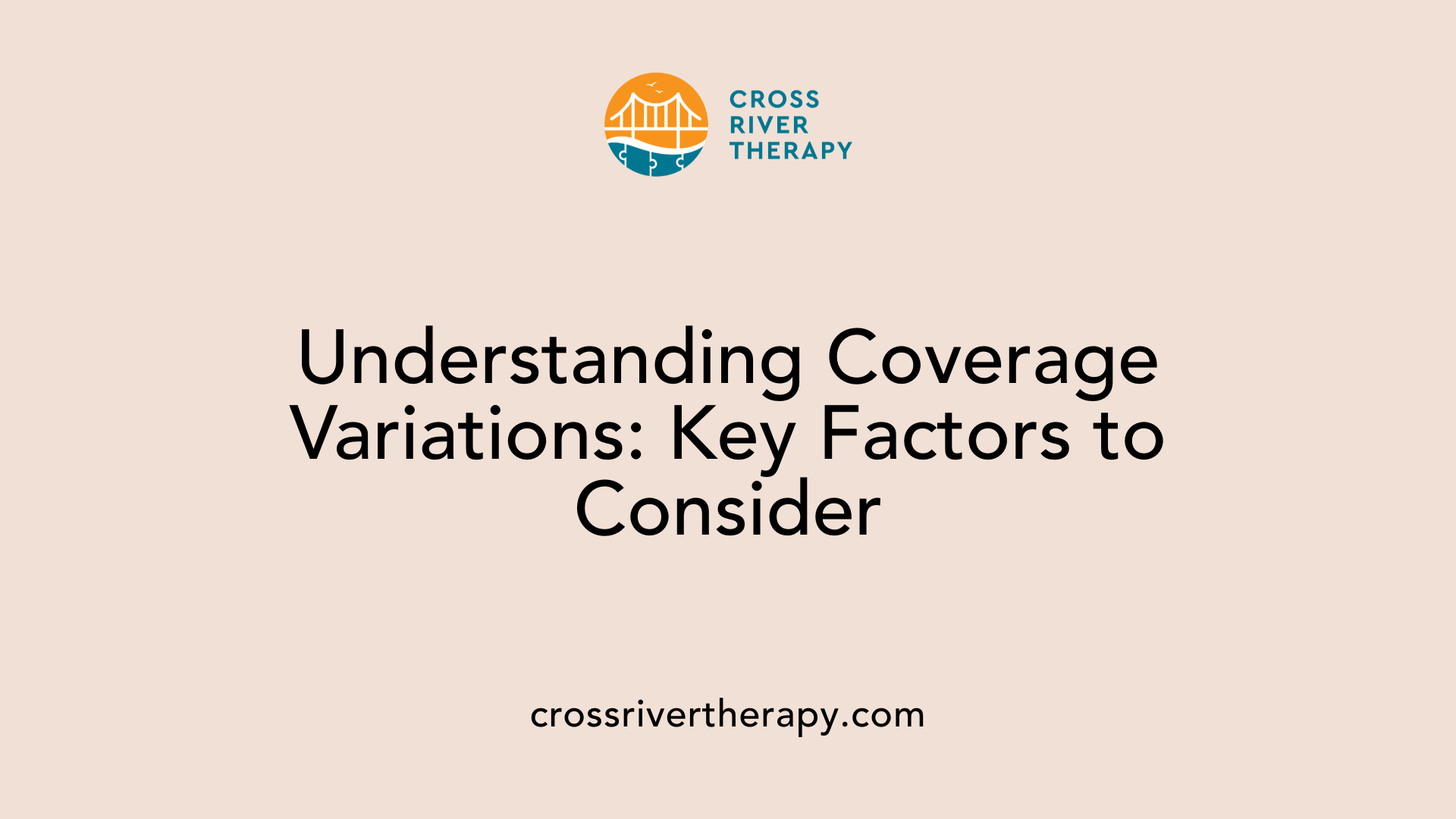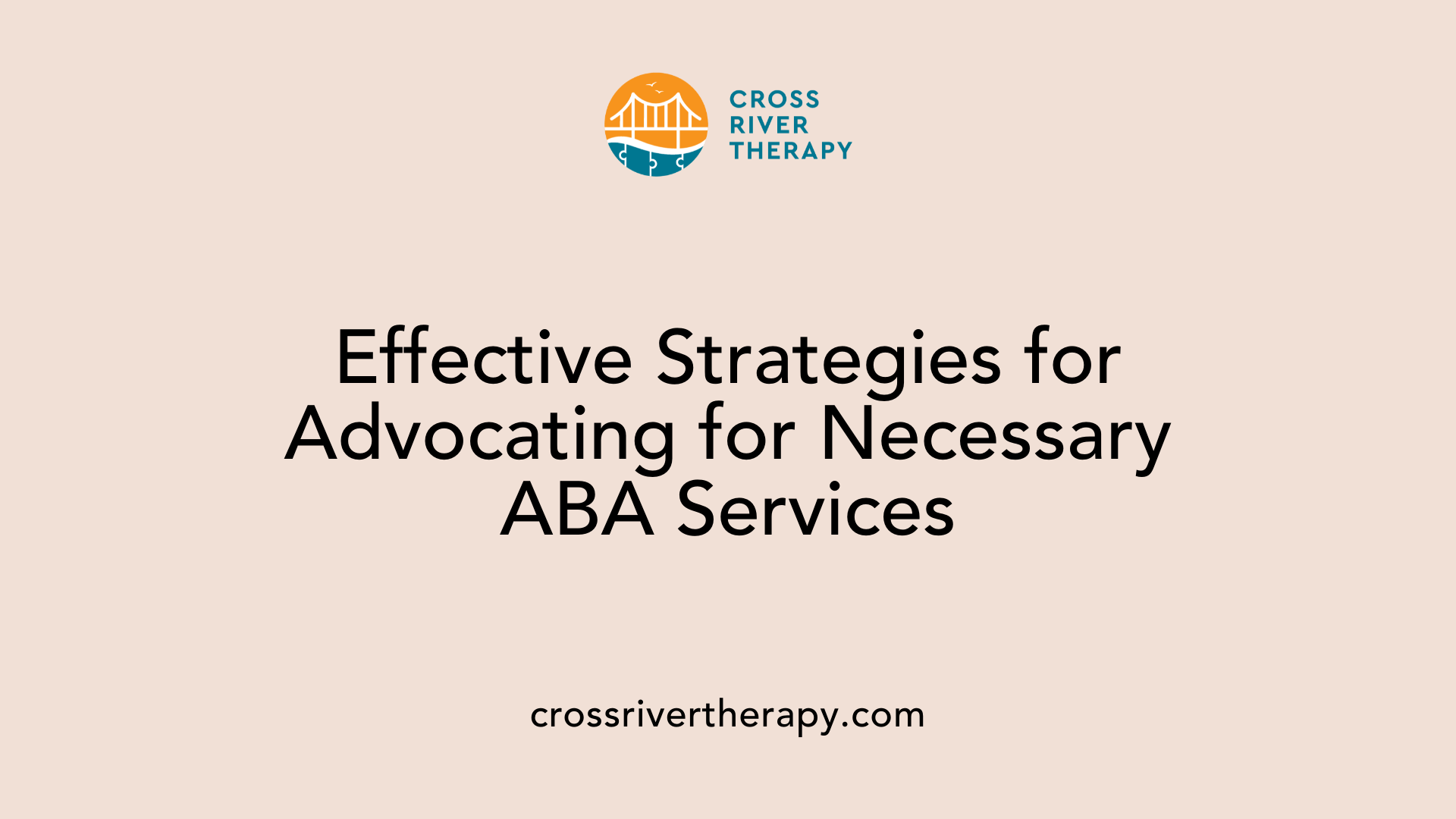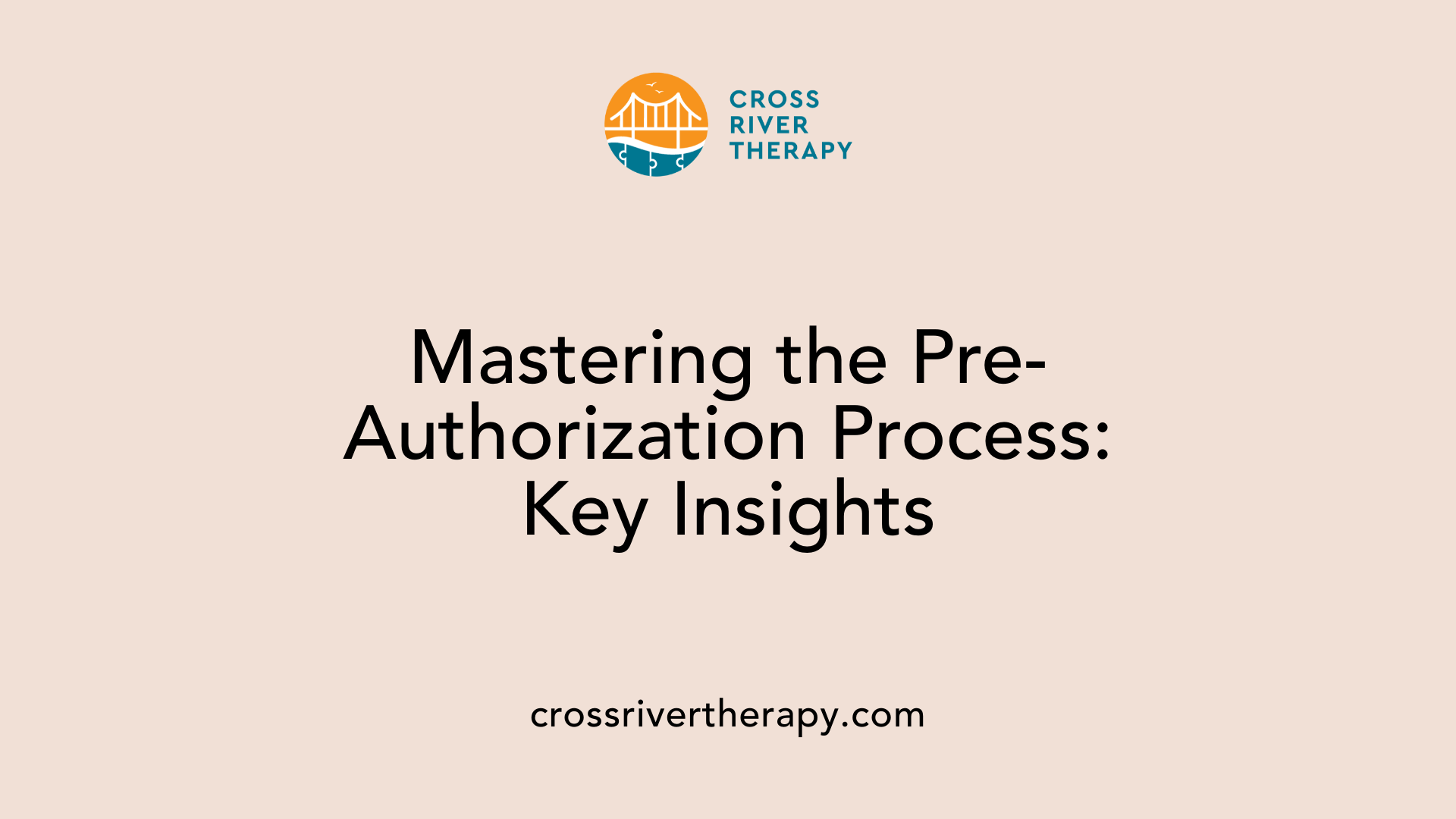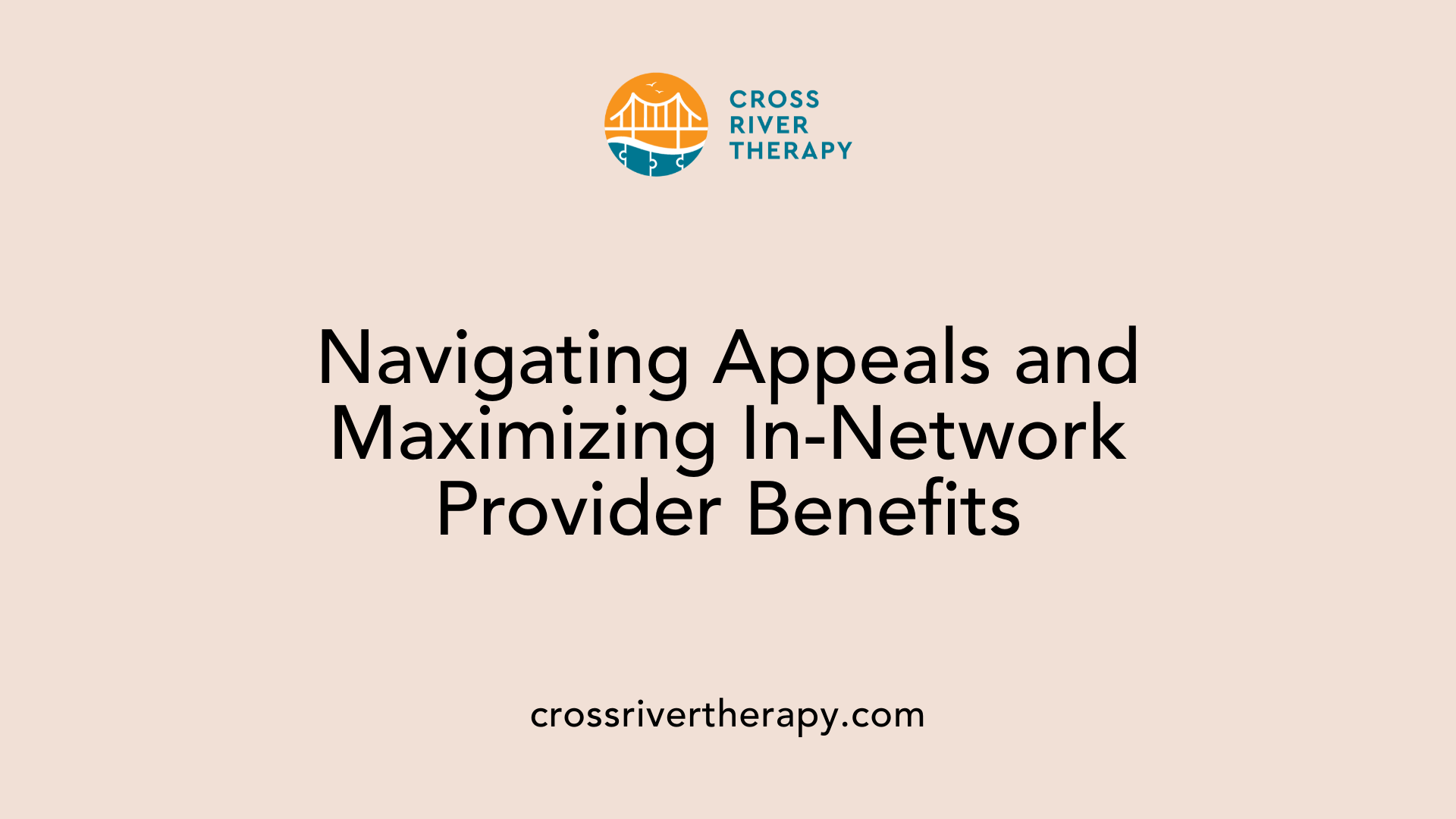How to Navigate Insurance for ABA Therapy Coverage
Unlocking the Mysteries of Insurance Coverage for ABA Therapy
Understanding ABA Therapy Insurance Coverage
Understanding the nuances of insurance coverage for Applied Behavior Analysis (ABA) therapy is crucial for families managing autism spectrum disorder (ASD) care. With federal and state mandates improving access, it's essential to grasp how these policies work and the steps required for securing essential services. This guide breaks down the complexities of ABA therapy coverage and offers insights into maximizing insurance benefits.
Is ABA Therapy Covered by Insurance?

Is ABA therapy covered by insurance?
Yes, ABA therapy is often covered by insurance, especially for individuals with an autism diagnosis, due to federal and state mandates. All 50 states require fully insured health plans to provide some level of coverage for ABA services. However, how these services are covered can vary significantly based on individual insurance providers and state laws.
For self-funded insurance plans, coverage for ABA therapy is determined by the employer and may not be subject to state mandates. Parents must scrutinize their insurance policies to identify copayments, deductibles, and any limitations or exclusions related to ABA therapy.
Understanding Coverage Variations
Parents should note that several factors impact coverage:
- State Variations: States may impose specific coverage requirements, including age restrictions and benefits caps. For example, Arizona has a cap of $50,000 annually for children under nine.
- Plan Specifics: Policies can differ widely, with some insurance plans requiring pre-authorization for ABA therapy. This process often demands specific documentation.
- Provider Networks: Choosing in-network providers can lead to cost savings, so families should verify therapy providers’ network status regularly.
In case of coverage disputes, families must be familiar with the appeals process and maintain organized documentation to facilitate any claims or appeals for necessary therapy.
Navigating Insurance Complexities for ABA Therapy

What are practical steps to navigate insurance complexities for ABA therapy?
Navigating the intricacies of insurance for Applied Behavior Analysis (ABA) therapy requires a strategic approach. Review Your Insurance Policy: Begin by examining your insurance policy details, focusing on potential limitations such as session caps or age restrictions, which can influence the coverage available.
Develop Individualized Billing Plans: Create billing plans that reflect the unique needs of your child, especially if they have a rare autism spectrum disorder. Work closely with your ABA provider to ensure the therapy aligns with what your plan covers.
Document Necessary Information: Make sure to compile all required documentation when dealing with your insurer. This includes therapy notes, progress reports, and session summaries to facilitate claims approval.
Stay Informed and Communicate: Regularly check for updates on policy changes that might affect your coverage. Maintain open communication with your ABA provider and insurance company to clarify any ambiguities.
Understanding policy details and procedural codes
Success in securing coverage for ABA therapy also hinges on knowledge of Current Procedural Terminology (CPT) codes. Utilizing appropriate CPT codes in billing can expedite the reimbursement process. It's advisable to conduct periodic billing audits to ensure compliance and transparency.
Organize Documentation: Keep meticulous records of therapy sessions and any corresponding paperwork to support your claims, ensuring you have everything needed in case of disputes or appeals.
Explore Alternatives If Needed: If insurance falls short, consider exploring alternative funding sources such as government programs or scholarships that can help cover necessary therapies.
Advocating for ABA Services

What strategies can be used to advocate for necessary ABA services?
To effectively advocate for ABA services, parents and caregivers should start by understanding their child’s rights under significant laws like the Individuals with Disabilities Education Act (IDEA) and Section 504 of the Rehabilitation Act. Familiarity with these laws equips parents to ensure appropriate services are provided.
Building strong relationships with school staff is crucial. Parents should communicate openly with teachers and administrators to align school strategies with external ABA therapy goals. This alignment is critical for achieving the best outcomes for the child.
Gathering and maintaining data about the child’s progress can reinforce advocacy efforts. Documentation provides tangible proof of a child’s needs and effectiveness of ABA therapy in subsequent discussions.
Additionally, actively participating in IEP meetings and decision-making processes gives parents a stronger voice in advocating for necessary services. Networking within the autism community, whether through support groups or local events, can also yield valuable resources and shared experiences.
Lastly, encouraging student involvement in advocacy promotes their independence and helps them express their unique communication preferences, making them active participants in their educational journey.
Building relationships with schools and community resources
Establishing a collaborative atmosphere is beneficial. Schools that know families well are more receptive to discussing developmental strategies that incorporate ABA therapy. Parents should seek to establish consistent communication channels with school personnel for ongoing collaboration.
Connecting with local advocacy organizations can also provide additional support, resources, and guidance for navigating the complexities of ABA service provision. These organizations often have expertise in the appeals process and may offer workshops or informational sessions on maximizing insurance benefits for ABA therapy as well.
Understanding Insurance Plans and ABA Therapy
How do different health insurance plans cover ABA therapy?
Insurance coverage for ABA therapy varies significantly among different health insurance plans. For instance, Blue Cross Blue Shield offers extensive mental health benefits that encompass coverage for ABA therapy as part of their dedication to promoting mental well-being, addressing both behavioral disorders and developmental disabilities.
Members of such plans can access tailored behavioral health services through platforms like Charlie Health, which facilitate immediate treatment once benefits are verified. This streamlined approach aids families in quickly receiving appropriate support.
Copays for mental health services differ widely across various health plans. Some may present low or even zero copays, which helps make these necessary services more financially accessible for families in need. Consequently, this can remove some financial hurdles when accessing critical therapy types like ABA.
Mental health coverage inclusions
The landscape of mental health coverage in insurance plans is evolving, with many insurers increasingly recognizing the importance of ABA therapy for children diagnosed with autism spectrum disorder (ASD). As part of comprehensive mental health coverage, insurance policies now often include specific provisions for behavior therapy aimed at developing skills and enhancing developmental outcomes for eligible children.
To better understand coverage specifics, families are encouraged to review their policy details closely, focusing on sections related to behavioral health and autism services. It is crucial to evaluate factors like deductibles, copayments, and any pre-authorization requirements that may impose additional barriers to accessing therapy. Plans may also implement utilization reviews that affect therapy authorization, so familiarity with these details can ensure smoother access to care.
Families can navigate the complexities of insurance coverage by keeping organized documentation, maintaining communication with providers, and utilizing advocacy resources where necessary. This comprehensive approach empowers families to manage their out-of-pocket costs effectively and seek the necessary therapy support when needed, fostering optimal developmental outcomes for their children.
Navigating Pre-Authorization and Costs

How does the pre-authorization process work for ABA therapy?
The pre-authorization process for ABA therapy can seem daunting but is essential for securing coverage. Families start by gathering necessary documentation, which includes the insurance card and an autism diagnosis statement. This information is then submitted by the child's Board Certified Behavior Analyst (BCBA) to the insurer.
Typically, this approval process takes anywhere from a few weeks to a month. The waiting period for insurance approval usually lasts around 2-3 weeks, but it may extend depending on the provider's specific requirements. Once approved, families can schedule an initial assessment quickly, which makes getting started on therapy more efficient.
What are the financial implications and strategies for managing costs?
Understanding the financial landscape of ABA therapy is crucial for parents. Key terms like deductibles and copayments can significantly impact out-of-pocket expenses. Here are some strategies to manage these costs:
- Contact your insurance provider: Checking whether the therapist is in-network can significantly reduce costs.
- Utilization reviews: Be prepared for potential reviews by insurers, assessing the therapy's medical necessity.
- Appeals process: If coverage is denied, families should know how to appeal the decision to maximize their therapy support.
- Alternative funding options: Explore government programs, grants, and financial assistance for additional support.
By being proactive and organized, parents can navigate the complexities of insurance and manage costs effectively.
Typical Costs of ABA Therapy with Insurance
What are the typical costs of ABA therapy with insurance?
The typical hourly rate for ABA therapy ranges from $120 to $200 per hour. Depending on therapy duration and frequency, monthly costs can vary significantly, leading to potential monthly expenses from $1,200 to $8,000. Families may face very different out-of-pocket expenses based on their specific insurance plans and coverage.
Understanding financial responsibilities
Knowing your financial responsibilities is critical. Insurance coverage for ABA therapy varies widely, with policies including deductibles, copayments, and limits on annual benefits. Parents should carefully review their insurance policy to identify specific costs associated with ABA therapy, including any exclusions or caps.
Cost management using HSAs and financial programs
To manage out-of-pocket costs, families can utilize Health Savings Accounts (HSAs) or financial assistance programs. These options can help offset expenses, making necessary therapies more accessible. Additionally, exploring government programs and grants can provide further support for families in need.
Appealing Insurance Denials and In-Network Considerations

Claims process and handling denials
Navigating denials for ABA therapy claims can be challenging for families. If your claim is denied, the first step is to carefully review the denial notification to understand the reasons provided. Look for issues such as incorrect coding or missing documentation. It may be necessary to collaborate with your ABA provider to gather the right information for an appeal.
Filing an appeal requires careful attention to the claims process outlined by your insurance provider. Documentation must be organized and clearly presented, and families should be proactive in following up on the status of the appeal. Advocacy organizations can also provide insight and assistance regarding the appeals process, helping parents understand their rights and options.
Importance of in-network providers for cost management
Choosing in-network ABA therapy providers can significantly reduce out-of-pocket costs. Insurance plans often negotiate better rates with these providers, meaning lower co-pays and fewer unexpected expenses. Parents should consult the insurance directory to confirm if their selected therapists are in-network. If out-of-network options are considered, it's essential to inquire about potential reimbursement rates to avoid higher costs.
Maintaining ongoing communication with insurance administrators can help families stay informed about provider status and changes to their coverage, ensuring they receive the needed support without overwhelming financial burdens.
Conclusion
Navigating the intricate world of insurance for ABA therapy requires diligence and informed advocacy. By understanding policy specifics, engaging with community resources, and staying organized with documentation, families can better secure the comprehensive care necessary for those with autism spectrum disorder. Continuous education on insurance policy changes and active engagement with providers ensure that families are not only prepared for current needs but are also adaptable for future challenges.
References
- Insurance Coverage for ABA Services - TherapyWorks
- Navigating Insurance Changes For Autism Therapy
- 5 ABA Insurance Coverage Challenges and How to Overcome Them
- Insurance Coverage in ABA Therapy - Autism Treatment
- Understanding Insurance Coverage for ABA Therapy - Brightside ABA
- Applied Behavior Analysis (ABA) | Autism Speaks
- How to Be an Effective Autism Parent Advocate
- Integrating ABA Therapy in Schools: Strategies for Success
- Blue Cross Blue Shield Covered Therapy - Charlie Health
- Insurance Coverage for ABA Services - TherapyWorks



